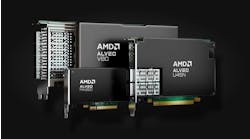Improve Data Center Efficiency with Advanced Monitoring and Calculated Points
Efficient data center management confronts hurdles such as missing values from vendor choices and device disparities, while industry standards for network monitoring lack consistency in defining minimum device support values. Traditional alarms tackle first-level issues but fall short in detecting nuanced changes, prompting the need for advanced calculated points treated akin to native device points, thereby enhancing monitoring and problem-detection capabilities in DCIM (Data Center Infrastructure Management) systems.
Some challenges hinder your ability to manage your data center efficiently, such as missing “simple” values due to vendor choices and a lack of uniformity by the nature of the gear type (like having volts and amps but not providing power). Devices may also lack complex values like total run-time or the ability to detect “second level” issues.
Industry standards for network monitoring protocols exist, and vendors have become very compatible. Still, there are no set standards that define the minimum set of values that should be supported on a given device type, or a vendor may choose not to report all possible values in a model to help drive model value differentiation.
Alarms detect “first level” issues – like passing a threshold. For example, if a temperature value exceeds a target of 80 degrees. Alarms based on advanced calculated points allow for the detection of second-level issues. For example, detecting if the difference from the previous reading (delta) was greater than the average delta for the past X changes. This enables an alarm indicating the rate of change has changed.
This allows you to create alarms that are triggered by events like a sharp rise or drop in temperature or a rapid drop in fuel level. This capability improves your ability to understand the behavior your infrastructure exhibits. This is an improvement over basic threshold alarms.
These are just a few examples. It is important to note that you must treat the calculated points equally to native device points so that they are recorded and trended over time.
Below is a list of the general issues solved by a solution that provides the ability to derive calculated values based on native values AND treats them like native points, giving history, alarming, and trending:
Fill in “Simple” Missing Values
A device may not provide a data point for a specific aspect of its state. In some cases, a calculated data point can fill in this gap. For example, if a device does not provide a native point for power but does have native points for voltage and current, then a calculated point can be used to fill in the missing power value by calculating it from the other points.
Combine Devices to Get Uniform Access to Information
For example, a BCM (Branch Circuit Monitor) may not have a voltage tap. This may lower the cost of the selected model, but without a voltage tap, the BCM cannot show power and will only provide current. With a flexible DCIM (Data Center Infrastructure Management) solution, you can aggregate points across physical devices. You can use an upstream device (like a UPS or PDU) as a point source for voltage. Combined with your BCM current values, you can provide power for each monitored circuit. Like the other examples here, you can store, trend, and use these to define threshold alarms.
Create Complex Functional Values Missing on a Device, Like Value Accumulation
Some generators provide an ongoing value for total generator run-time, used to determine maintenance scheduling and the device's overall life. However, not all vendors provide this tracking ability for all models.
A flexible calculated point architecture allows you to fill in this gap to achieve like-for-like data. A calculated point can accumulate run-time by incrementing a value coordinated over time, whenever the “generator is running” flag is true.
Likewise, if a power meter does not provide energy (accumulated power usage), you can simulate this value by tracking power usage as an average over an hour (like an hour) and accumulating that value. The result is a close equivalent of an energy accumulation register.
Problem Detection – Change in Rate of Change
Another advantage of a flexible calculated point system is that as values change over time, you can, as the point and instant of collection, determine aspects – like changes in the rate of change of a value. If a value typically changes by “5 amps” or “3%” in each cycle suddenly changes by twice that value – it can be detected instantly, allowing this to trigger an instant alarm, rather than waiting for a post-mortem examination after an incident occurs.
The Takeaway
Using calculated points adds up to a superior experience for the DCIM user. Modius OpenData supports this out of the box. The power of this flexibility is the ability to fill in data gaps left open by vendors. With Modius OpenData, you can monitor and report on all infrastructure hardware for true agnostic universal support. Ask us to demonstrate this capability for you!

Max Hamner
Max Hamner is Research and Development Engineer at Modius. Contact Modius to learn more about its DCIM solutions. Modius OpenData provides integrated tools including machine learning capability to manage the assets and performance of colocation facilities, enterprise data centers, and critical infrastructure. OpenData is a ready-to-deploy DCIM featuring an enterprise-class architecture that scales incredibly well. In addition, OpenData gives you real-time, normalized, actionable data accessible through a single sign-on and a single pane of glass.
Delivering DCIM solutions since 2007, Modius is passionate about helping clients run more profitable data centers and providing operators with the best possible view into a managed facility’s data. Modius is based in San Francisco, California, and is proudly a Veteran Owned Small Business (VOSB Certified).





